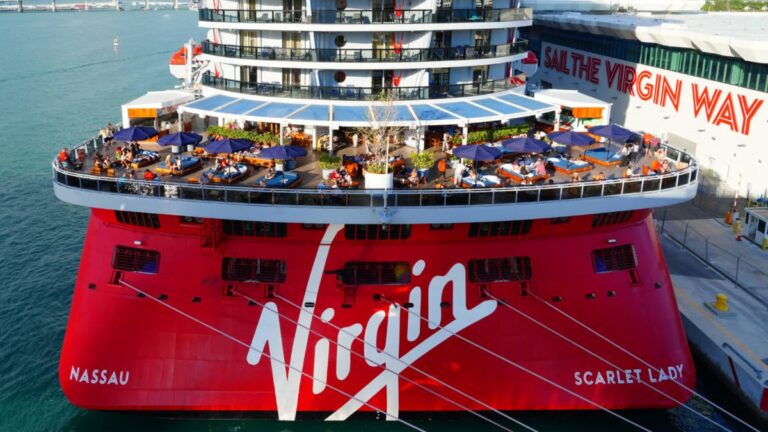Virgin Voyages claims to have the fastest internet at sea, and there was a good chance the cruise line could claim that title. With the introduction of a combination of cutting-edge technologies, the cruise line has announced total available speeds of up to 1.5 Gbps for guests.
This impressive number far exceeds standard offerings, where standalone Starlink systems offer speeds of up to 220 Mbps. If theory and reality are accurate, Virgin Voyages’ connectivity would be a major step towards achieving a fully connected ship experience, a goal that has remained somewhat elusive due to the limitations of older systems.
Revolutionizing maritime connectivity
Virgin Voyages has announced a partnership with SES to deploy a combination of connectivity systems, including SES Cruise mPOWERED and Starlink PRO, across its fleet, dubbed “Pretty Fly for a Wi-Fi.”
This technology combines the coverage of medium and low orbit satellites with geostationary satellites. According to SES and Virgin, guests will be able to enjoy unprecedented connection speeds of up to 1.5Gbps per ship.
Virgin Voyages was the first cruise line to utilize these satellite systems in combination, setting a new standard for maritime internet connectivity.
“Our adults-only cruise experience is underpinned by unparalleled connectivity at sea with the same level of connectivity available on land, which is why we partnered with SES to provide our guests and crew with this level of connectivity. We’re excited to be able to offer a cruise that’s unlike any other on the market.” Steven Worling, senior director of infrastructure and security at Virgin Voyages, said:


The combination of geostationary, medium-earth orbit (MEO) and low-earth orbit (LEO) satellite systems will play a key role in the enhanced connectivity that Virgin Voyages seeks to provide.
How Virgin’s new system works
Geostationary satellites orbit the Earth at the same speed as the Earth’s rotation. This means that they remain in the same position relative to the Earth’s surface. Modern geostationary satellite systems can use high-throughput satellites (HTS), which provide much greater bandwidth capacity.
MEO satellites orbit the Earth at altitudes ranging from 2,000 to 35,786 kilometers, providing larger coverage areas and requiring fewer satellites for global coverage. Starlink’s LEO satellites orbit at altitudes between 160 and 2,000 kilometers, resulting in low latency and high data transfer rates.
“For cruise lines, being able to constantly innovate and offer new and better guest experiences for passengers is essential to staying ahead of the curve.” Simon Maher, Senior Vice President, Cruise, SES said:


Also read: Bahamian destination offers free WiFi to cruise passengers
“Currently cutting-edge connectivity is at the heart of this, using multiple orbits from geostationary to medium-earth to low-earth orbit to optimize bandwidth and support for both passengers and crew anywhere in the world. That’s why we’ve expanded our services to create a fully integrated, end-to-end service that meets your needs at sea.”
Improving the guest and crew experience
SES Cruise mPOWERED and Starlink PRO services feature high-performance connectivity with no data limits. However, it has not been announced whether Virgin will offer the system for free.
Currently, cruise lines offer guests free social media, email, web browsing, and messaging. Access to the $30 per day premium service, which supports streaming, is not currently included in cruise fares.
Introduction of Starlink Maritime in July 2022 revolutionizes connectivity For our sea guests, we cater to both leisure and work-related needs. Standalone Starlink systems already offer speeds of up to 220 Mbps, but integration with the SES system promises even faster speeds and increased reliability.
In today’s increasingly digital world, Connectivity is paramount, Virgin Voyages tends to attract a particularly young guest demographic. Providing a fully connected ship experience can be the deciding factor for passengers when booking a cruise.



